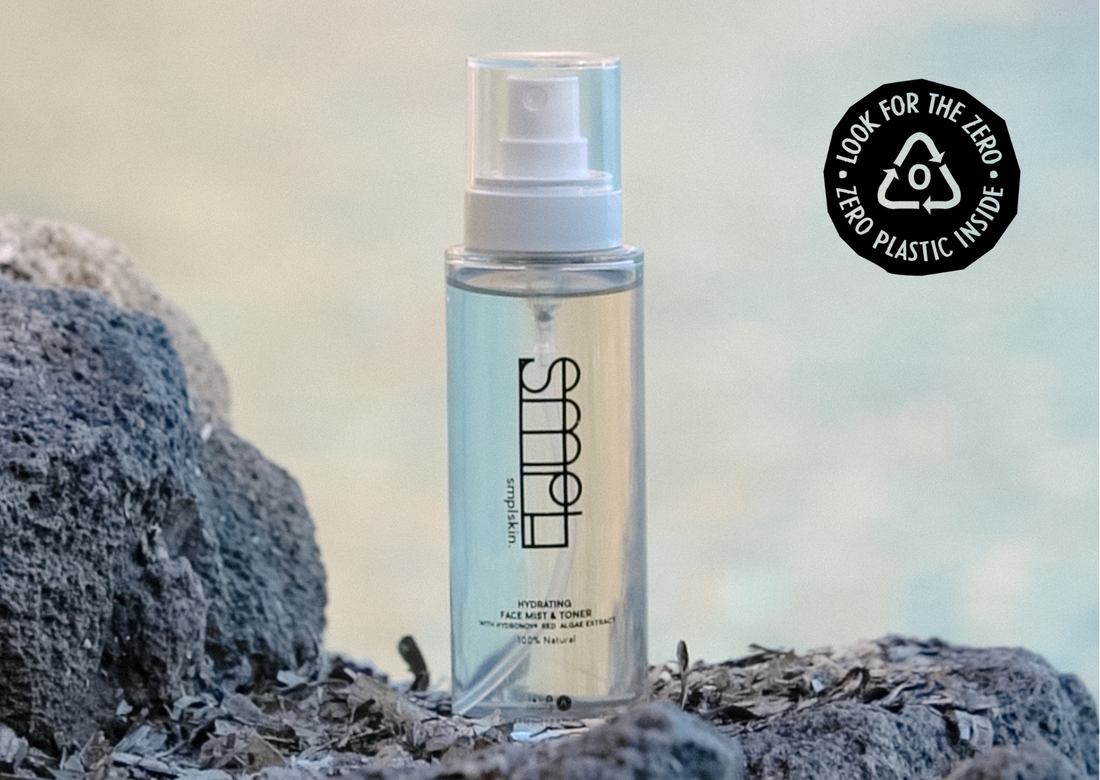Microplastics.. We hear a lot about them these days. But what exactly are microplastics? Laura - from The Green Cosmetry - explains it to us:
What are Microplastics?
Microplastics are small synthetic particles made from plastic materials such as polyethylene, polypropylene and polystyrene. They are commonly used in cosmetics for a variety of purposes, including as scrubbers, viscosity regulators, emulsifiers, film formers, liquid absorbers and binders. These tiny plastic particles consist of carbon and hydrogen atoms bonded together in polymer chains. However, because they can be as small as 1 µm (nano-sized) or up to 5 mm, they pose a major problem for both human health and the environment.
Why are they a problem?
One of the biggest concerns regarding microplastics is their persistence in the environment. Once these particles are discarded, there is no efficient recovery method, they are not soluble in water and do not biodegrade. As a result, they accumulate in various ecosystems, including oceans, fresh water, solid waste and even the air we breathe. Microplastics have been found in a huge variety of environments, indicating their widespread contamination.
Microplastics in cosmetics
Part of the problem is direct human contact with microplastics. These particles can enter the human body through three main routes: inhalation, ingestion and skin contact. Once in the body it is no longer excreted, it can accumulate in several places in the body such as liver, kidneys, brain, placenta and other tissues. Exposure means potentially leading to oxidative stress and inflammation, which can then have greater consequences/diseases. Skin contact is one of the reasons why you don't want microplastics in your cosmetics. Fortunately, this part makes a relatively very small contribution to the total exposure to microplastics; the environmental contamination poses the greatest risk of absolute exposure.
Bigger problem
Environmental pollution allows microplastics to enter the food chain and accumulate in various organisms. Eventually, they can reach people who consume these contaminated food sources. This widespread presence of microplastics in the food chain raises concerns about their potential impact on human health.
*Good news is that the European Union (EU) will ban microplastics in cosmetics. However, this process is too slow and the scope of what exactly is being banned may be too limited. So we are still waiting for that. 1 , 2 , 3 , 4 , 5
Microplastics in your skin care? Rather not! Fortunately, all SMPL products are 100% free of microplastics.
1 Yee, MS-L. et al. Impact of microplastics and nanoplastics on human health. Nanomaterials 11 , 496 (2021).
2 Ju, S. et al. Biodegradable chito-beads replacing non-biodegradable microplastics for cosmetics. Green Chemistry 23 , 6953-6965 (2021).
3 Lei, K. et al. Microplastics releasing from personal care and cosmetic products in China. Marine Pollution Bulletin 123 , 122-126 (2017).
4 Anagnosti, L., Varvaresou, A., Pavlou, P., Protopapa, E. & Carayanni, V. Worldwide actions against plastic pollution from microbeads and microplastics in cosmetics focusing on European policies. Has the issue been handled effectively? Marine Pollution Bulletin 162 , 111883 (2021).
5 Leslie, H. Review of microplastics in cosmetics. IVM Institute for Environmental Studies 476 , 1-33 (2014).

